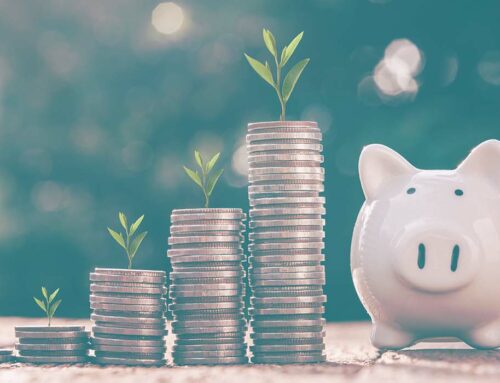January 2022
Summary:
- If we only evaluate other rate hikes, current market volatility may continue until after the Fed’s first rate hike.
- Although bond values and interest rates move inversely, owning bonds during a rising rate environment has not been horrible. In fact, during the most recent periods of rising rates, bonds have shown positive returns.
Market Returns
(YTD through 1-27-2022)
-9.16% S&P 500 Index (US stocks)
-5.64% MSCI EAFE (Int’l stocks)
-2.56% Bloomberg US
Aggregate Bond (US Bonds)
Historically, markets tend to react abruptly to changing interest rate expectations, which is the environment that exists today, while remaining calmer during the actual policy increases.
Part 1: The Myth About Bonds
Many advisors and investors have been increasingly fearful of what rising interest rates may do to the bond market. After all, bond prices decline as rates increase, known as duration risk. While duration risk is very real, rates along the yield curve don’t always move in tandem. Also, high quality bond yields are typically the best proxy for expected returns for bonds, so while there may be short term volatility, it can mean a better longer-term picture.
We examined two recent periods of Fed policy adjustments, the mid 2000s and mid 2010s, and found what may be counterintuitive to most investors. During each of these periods of policy rate and government yield increases, both the US bond and equity market1 produced positive total returns. In both cases, the Fed Funds Rate rose significantly, but the 10-year yield increased only slightly.
| Dates | Fed Funds Rate |
US 10-Year Treasury Yield |
Dates | Fed Funds Rate |
US 10-Year Treasury Yield |
|---|---|---|---|---|---|
| 6/29/04 | 1.00% | 4.69% | 12/13/16 | 0.25% | 2.47% |
| 6/29/06 | 5.25% | 5.19% | 12/19/18 | 2.25% | 2.75% |
| 730 Days | +4.25 p.p. | +0.51 p.p. | 736 Days | +2.00 p.p. | +0.28 p.p. |
| Cumulative Total Returns |
6.06% Bloomberg US Aggregate |
16.22% S&P 500 |
3.78% Bloomberg US Aggregate |
14.85% S&P 500 |
We get it. No one is excited about bonds these days (neither are we). BUT, they continue to serve an important role in risk management, inflation and yield delivery. Don’t be in a huge rush to discount their value in favor of more volatile or complex alternatives.
Part 2: Analysis of Market Action Prior to Rate Hikes
One Year Before and After the 2004 Rate Hike
- The six-month Treasury yield is a decent proxy for where the Fed Funds rate is headed. Roughly three months prior to the first rate hike, the six month Treasury yield began to creep up.
- There was a drawdown in the S&P 500 and NASDAQ Composite indices that started several months prior to the rate hike and bottomed shortly after the first rate hike.
- The path of rate hikes tended to follow the path of the six-month yield and coincided with a flattening yield curve and positive equity moves.
One Year Before and After the 2015 Rate Hike
- The six-month Treasury yield is a decent proxy for where the Fed Funds rate is headed. Roughly three months prior to the rate hike, the six-month Treasury yield crept up. However, it dropped during the first equity selloff as expectations for the hike dropped with equity market volatility.
- The drawdown in the S&P 500 and NASDAQ Composite indices started several months prior to the rate hike and bottomed shortly after the first rate hike.
- The path of rate hikes tended to follow the path of the six-month yield and coincided with a flattening yield curve and positive equity moves, however at a much slower pace than 2004 to 2006.
One Year Before and After the Expected 2022 Rate Hike
- The six-month Treasury yield is a decent proxy for where the Fed Funds rate is headed. Roughly three months prior to the expected first rate hike, the six-month Treasury yield crept up.
- The current drawdown in the S&P 500 and NASDAQ Composite indices has been incredibly swift thus far and on the heels of a very strong equity market run-up.
- A major question that remains is will the Fed provide more dovish guidance if the selloff tames inflation concerns and impairs the employment picture.
Part 3: The Bottomline
- The 6-month Treasury is a good proxy for the Fed Funds Rate. Roughly three months before the Fed raises rates it starts to move up.
- When that has happened, we’ve witnessed substantial market volatility (that’s what’s happening now).
- Historically, market volatility continued until shortly after that first rate hike.
- After the first rate hike, markets generally propel upward on the back of a strong economy.
Source: Helios Quantitative Research, Bloomberg
1 Source: Equity market represented by the S&P 500, bond market represented by the Bloomberg US Aggregative





